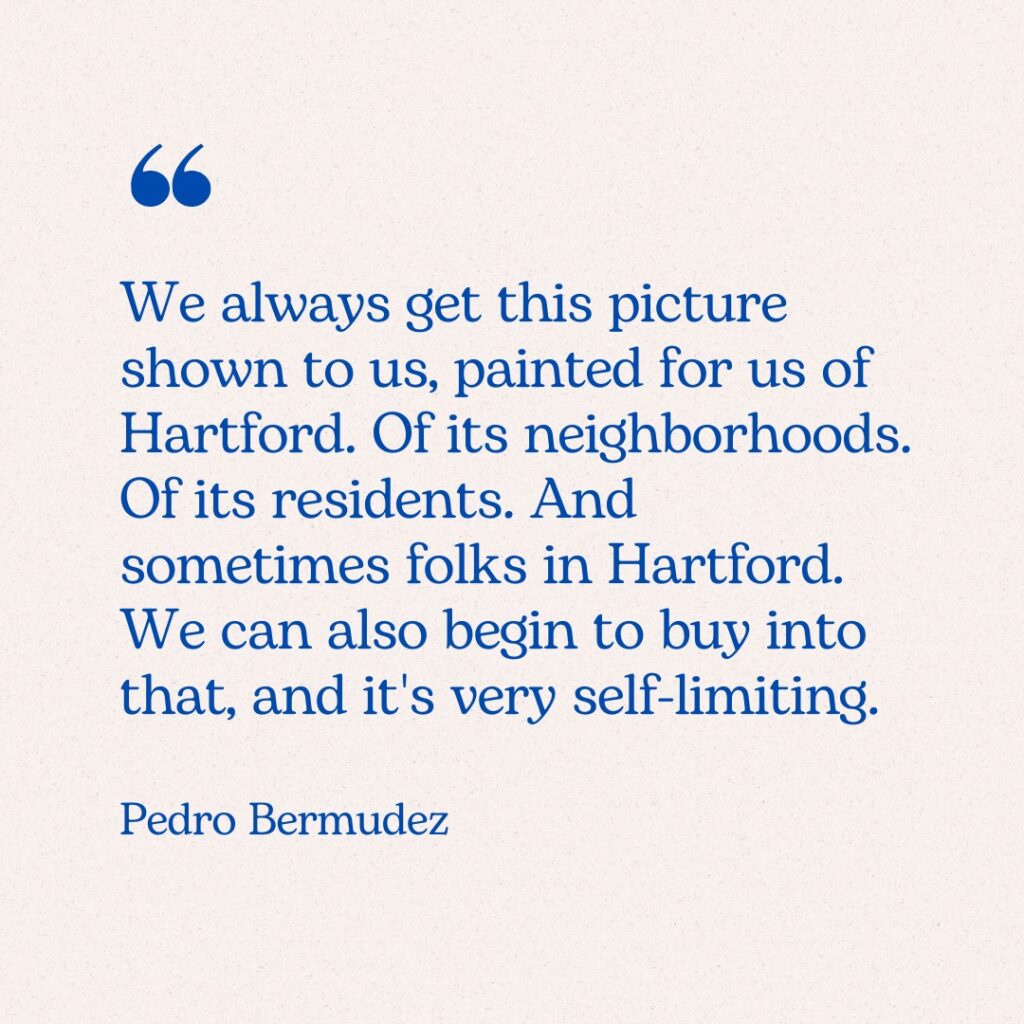Hartford, specifically the South End neighborhood, is one of Connecticut’s most diverse cities with 44% of residents identifying as Latino and 36% identifying as Black. In our oral history interviews, participants shared their reflections on the city’s diversity and its impact on their experiences.
Pedro Bermudez, for example, discussed the ethnic makeup of the city, stating, “I love the Puerto Rican population. The Haitian, the Dominican, the West Indian… all of it is just this beautiful mix of all sorts of different cultures. I really appreciate that. Brazilian and Indian (too). I could go on and on. I feel like it’s just a really accurate representation of what America is. But it always has been in terms of diversity, at least.”
This rich diversity sets the stage for understanding how environmental racism affects Hartford residents, particularly communities of color. It helps explain why their voices and lived experiences are central to conversations around environmental justice.
Through our oral history interviews, environmental racism emerged as one of the most deeply felt and widely discussed themes among current or previous Hartford residents. Participants consistently pointed to a pattern of harmful decisions that placed polluting facilities like the MIRA trash incinerator in low-income Black and Brown neighborhoods. This reality is not a simple matter of one facility, but reflects a system of neglect, policy failure, and unequal environmental burden that has become normalized over time.
Three major patterns surfaced in our interviews: the unequal placement of harmful facilities, the normalization of environmental harm, and generational deprivation of land and power.
- Unequal Placement of Harmful Facilities
Residents took note of how environmental burdens were not randomly paced but often deliberately concentrated in areas where resistance was unlikely or under-resourced. Escribano reflected this frustration: “Why do we have a trash plant in here? Why is this okay? Why do… why are people dumping? Why are people coming from outside, or even some of our neighbors, dumping here?”
- Normalization of Environmental Harm
Over time, this pattern of unequal burden has unfortunately become part of Hartford residents’ daily lives, so much so that many residents have stopped questioning it. The repetition of exposure, the absence of intervention, and the slow historic degradation of neighborhoods have made this injustice seem ordinary. The quiet normalizations show how the systemic harm can and has become embedded in Hartford residents’ environments and expectations, creating a sense that “this is just how things are” in some neighborhoods. Diana Heymann captured this tension between personal health struggles and public silence: “And I’m very sensitive, which, of course, I didn’t know until I was old. And so I had chelation therapy to remove mercury and light [from my lungs] … That’s the end result. But most people don’t have that level of awareness about what is causing health issues.” Her experience displays how environmental harm can become deeply personal, yet still go unrecognized on a larger scale. Many residents simply don’t have the resources or knowledge to identify the cause of their symptoms and much let to challenge those responsible. Unfortunately, what would be shocking has instead become a routine for Hartford residents.
- Generational Barriers and Strategic Neglect
Several participants emphasized how facility placement was not only about geography but also power. Sister Pat highlighted how location choices are intentional and reflect assumptions about which communities will be unable to resist: “There’s a better place for it in Hartford or New Haven or Bridgeport, you know, near people who can’t afford to fight back.” the long history of redlining, land use discrimination, and poltical exclusion came up in over 15 interviews. These policies have shaped not only where people live, but also who has the power to influence environmental outcomes. Hartford residents continue to feel the effects of decisions made generations ago, decisions that prioritized some communities’ comfort at the cost of others’ health.
